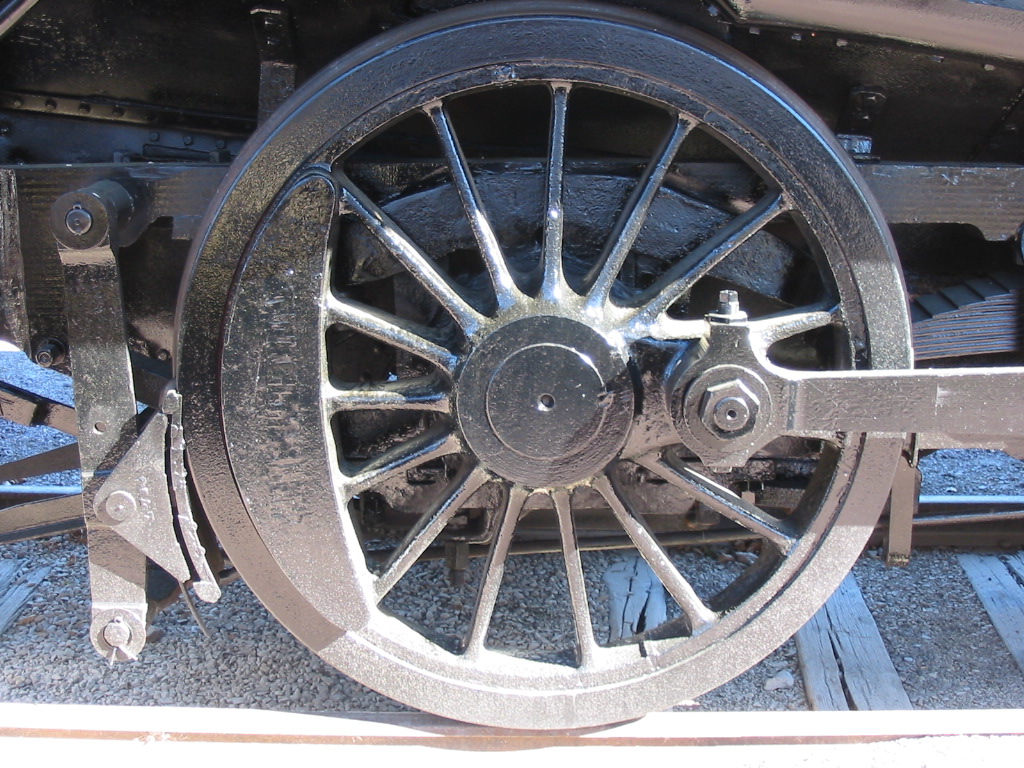|
Adhesive Weight
Adhesive weight is the weight on the driving wheels of a locomotive, which determines the frictional grip between wheels and rail, and hence the drawbar pull which a locomotive can exert. See also *Factor of adhesion *Tractive effort As used in mechanical engineering, the term tractive force can either refer to the total traction a vehicle exerts on a surface, or the amount of the total traction that is parallel to the direction of motion. In railway engineering, the term tr ... References Locomotives {{rail-transport-stub ... [...More Info...] [...Related Items...] OR: [Wikipedia] [Google] [Baidu] |
Locomotive
A locomotive or engine is a rail transport vehicle that provides the Power (physics), motive power for a train. If a locomotive is capable of carrying a payload, it is usually rather referred to as a multiple unit, Motor coach (rail), motor coach, railcar or power car; the use of these self-propelled vehicles is increasingly common for passenger trains, but rare for freight (see CargoSprinter). Traditionally, locomotives pulled trains from the front. However, Push-pull train, push-pull operation has become common, where the train may have a locomotive (or locomotives) at the front, at the rear, or at each end. Most recently railroads have begun adopting DPU or distributed power. The front may have one or two locomotives followed by a mid-train locomotive that is controlled remotely from the lead unit. __TOC__ Etymology The word ''locomotive'' originates from the Latin language, Latin 'from a place', Ablative case, ablative of 'place', and the Medieval Latin 'causing mot ... [...More Info...] [...Related Items...] OR: [Wikipedia] [Google] [Baidu] |
Factor Of Adhesion
An adhesion railway relies on adhesion traction to move the train. Adhesion traction is the friction between the drive wheels and the steel rail. The term "adhesion railway" is used only when it is necessary to distinguish adhesion railways from railways moved by other means, such as by a stationary engine pulling on a cable attached to the cars or by railways that are moved by a pinion meshing with a rack. The friction between the wheels and rails occurs in the wheel-rail interface or contact patch. The traction force, the braking forces and the centering forces, all contribute to stable running. However, running friction increases costs by requiring higher fuel consumption and by increasing the maintenance needed to address fatigue (material) damage, wear on rail heads and on the wheel rims and rail movement from traction and braking forces. Variation of friction coefficient Traction or friction is reduced when the top of the rail is wet or frosty or contaminated with greas ... [...More Info...] [...Related Items...] OR: [Wikipedia] [Google] [Baidu] |
Tractive Effort
As used in mechanical engineering, the term tractive force can either refer to the total traction a vehicle exerts on a surface, or the amount of the total traction that is parallel to the direction of motion. In railway engineering, the term tractive effort is often used synonymously with tractive force to describe the pulling or pushing capability of a locomotive. In automotive engineering, the terms are distinctive: tractive effort is generally higher than tractive force by the amount of rolling resistance present, and both terms are higher than the amount of drawbar pull by the total resistance present (including air resistance and grade). The published tractive force value for any vehicle may be theoretical—that is, calculated from known or implied mechanical properties—or obtained via testing under controlled conditions. The discussion herein covers the term's usage in mechanical applications in which the final stage of the power transmission system is one ... [...More Info...] [...Related Items...] OR: [Wikipedia] [Google] [Baidu] |

